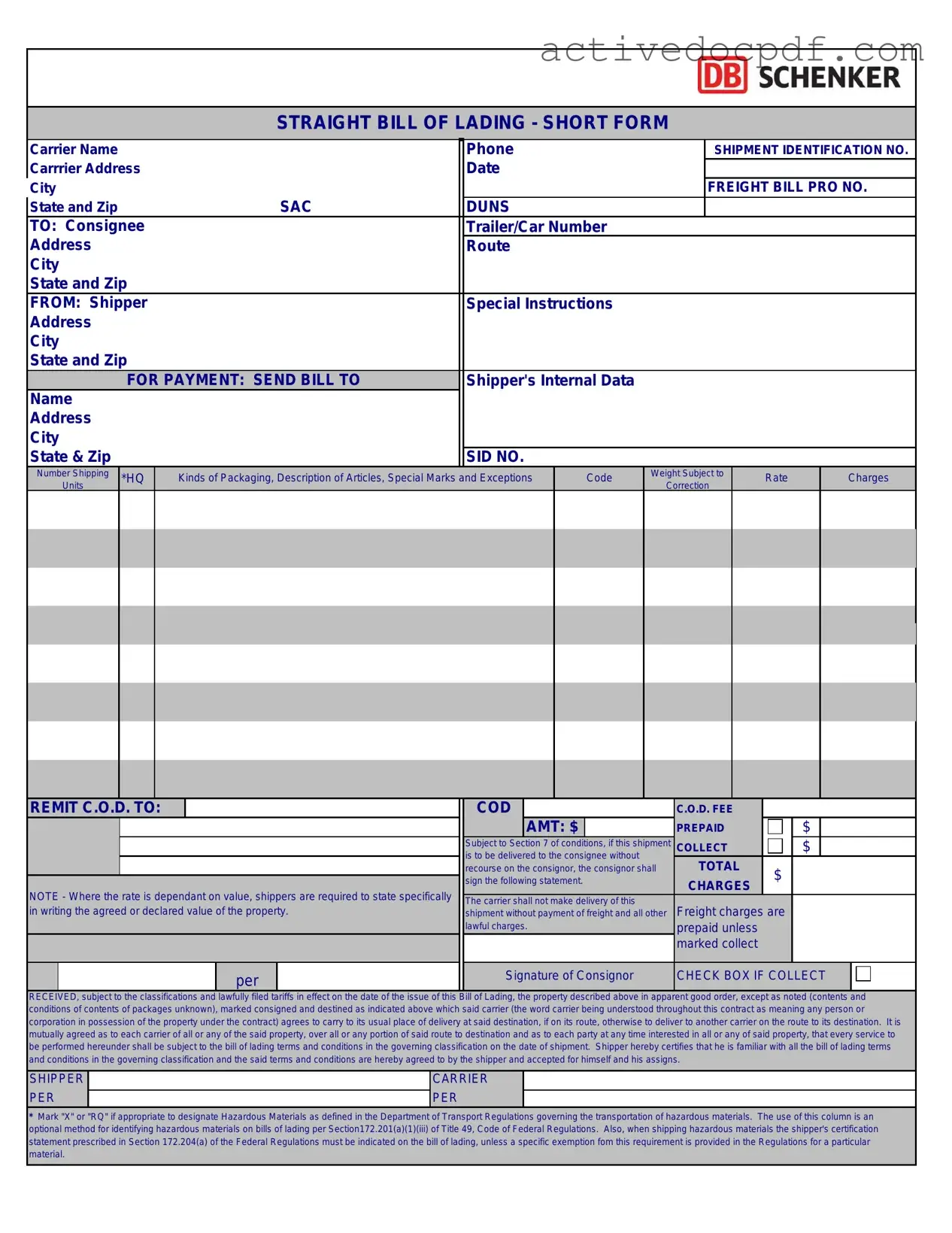What is a Straight Bill of Lading?
A Straight Bill of Lading is a document used in the shipping industry that serves as a receipt for goods and a contract for transportation. It is a non-negotiable document, meaning it cannot be transferred to another party. The goods are delivered directly to a specified consignee, who is named on the bill.
A Straight Bill of Lading typically includes the following information:
-
Names and addresses of the shipper and consignee
-
Description of the goods being shipped
-
Weight and quantity of the goods
-
Shipping instructions
-
Signature of the carrier or their representative
How does a Straight Bill of Lading differ from other types of bills of lading?
The main difference lies in its negotiability. A Straight Bill of Lading is non-negotiable, meaning it cannot be endorsed or transferred to another party. In contrast, a Negotiable Bill of Lading allows the holder to transfer ownership of the goods to someone else. This distinction affects how the goods can be handled during transit.
When should I use a Straight Bill of Lading?
Use a Straight Bill of Lading when you want to ensure that the goods are delivered directly to a specific person or entity. It is ideal for transactions where the buyer and seller have a trusted relationship, and there is no need for the goods to be sold or transferred during transit.
What are the benefits of using a Straight Bill of Lading?
Some benefits include:
-
Simplicity: It is straightforward and easy to understand.
-
Security: It reduces the risk of theft or loss since it is non-negotiable.
-
Clear ownership: The consignee is clearly identified, ensuring the goods reach the intended recipient.
What happens if the consignee is unavailable to receive the goods?
If the consignee is unavailable, the carrier may hold the goods until someone authorized can take possession. It’s essential to communicate with the carrier to arrange for a new delivery time or to designate an alternative person to receive the shipment.
Can a Straight Bill of Lading be amended?
Yes, a Straight Bill of Lading can be amended, but it usually requires the agreement of both the shipper and the carrier. Any changes should be documented clearly to avoid confusion or disputes later on.
How long is a Straight Bill of Lading valid?
The validity of a Straight Bill of Lading does not have a specific expiration date. However, it is generally advisable to resolve any shipping issues or disputes as soon as possible. Keeping records organized helps ensure that all parties are aware of their responsibilities.
